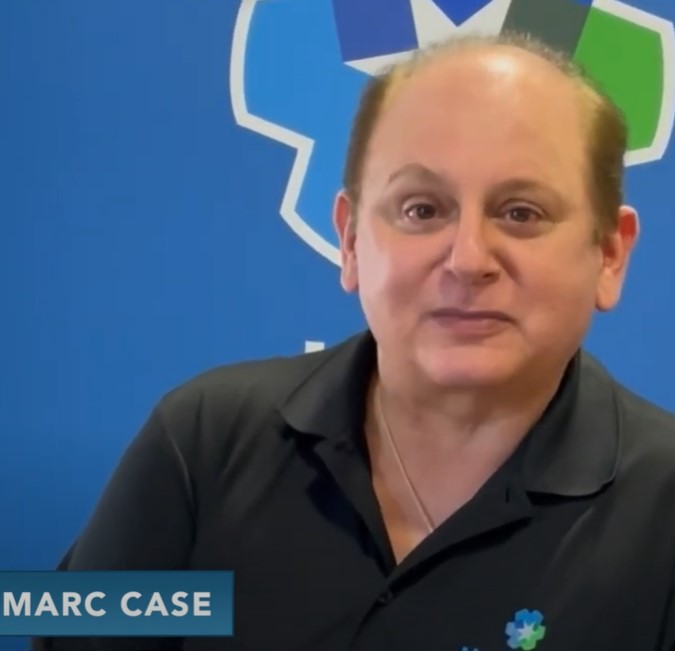Have you recently discovered mold in your New Jersey home or office and are looking to have it removed? You may be wondering what professionals will do to make sure the remediation is successful. And why mold containment barriers are important.
Containment barriers, also known as containment zones, play an important role in guaranteeing that the spread of mold is minimized during the removal process. They can help ensure that no further damage occurs.
In this post, we’ll discuss why professionals set up containment barriers for mold prevention. You can feel secure knowing there won’t be any residual issues following the completion of the job.
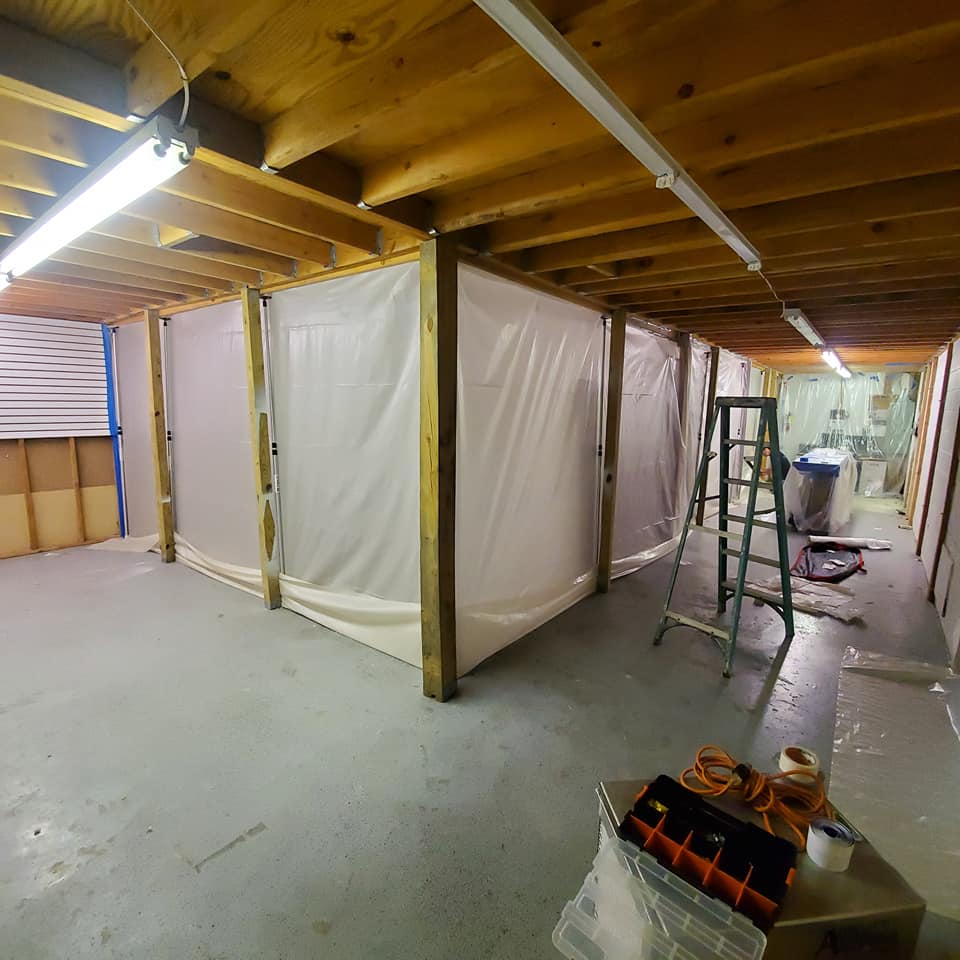
What is mold?
Mold is a type of fungus that grows in damp or wet environments. It reproduces by releasing spores into the air which then land on surfaces and start to develop colonies. These colonies spread as the fungi continue to reproduce and feed off the organic material they are growing on. Common mold species include Alternaria, Aspergillus, Cladosporium, Penicillium, and Stachybotrys chartarum (also known as “black mold”).
What takes place during proper mold remediation?
If you’ve found mold in your home, it can be tempting to try and take care of it yourself. However, this is a task best left to the professionals. Let’s break down what goes into the professional mold remediation process.
Inspection and Assessment
The first step of professional mold remediation is an inspection and assessment by a certified expert. This individual will inspect the area for potential sources of moisture that may be contributing to the growth of mold. This includes visually inspecting the living space, attic and basement or crawl space, and other areas where water may collect.
The inspector will use specialized equipment to identify hidden areas where mold might be growing or hidden sources of moisture. Once these steps are complete, they will make recommendations for New Jersey mold removal and remediation. The recommendations will be based on the findings of their assessment.
Mold Remediation Containment
Once the source of the mold has been identified, it must be contained to prevent further contamination. This involves sealing off the affected area with plastic sheeting to keep spores from spreading throughout your home or business. It also helps contain any hazardous materials that may have been generated during the removal process. Such as dust or debris from drywall or insulation material that could become airborne if not contained properly.
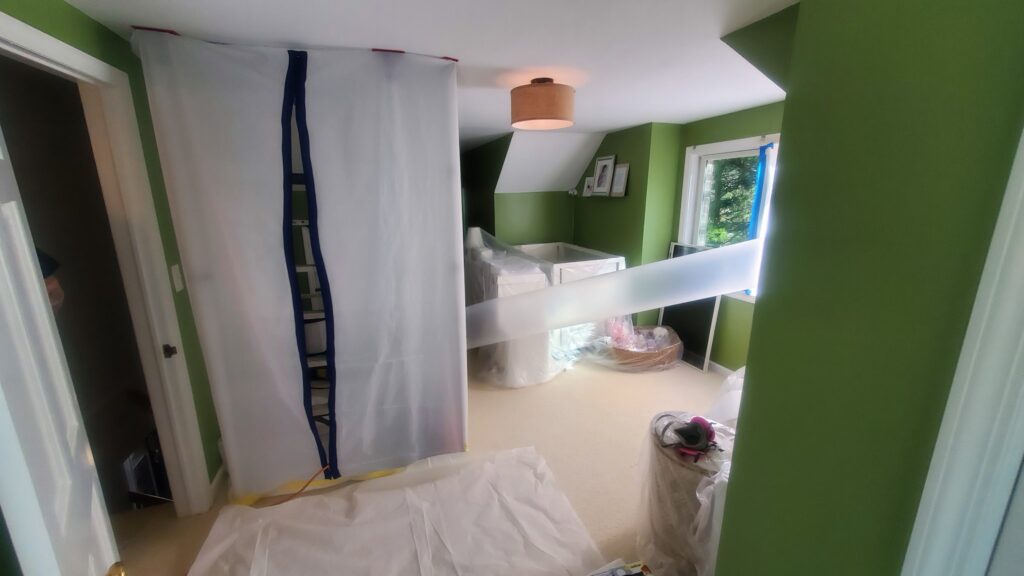
Removal & Disposal
The next step is removing the contaminated material safely and disposing of it properly according to local regulations. This includes using vacuum cleaners equipped with HEPA filters to collect any remaining dust or debris. Also, dispose of all contaminated materials in sealed containers with “hazardous waste” labels attached. This ensures they can be safely disposed of according to local laws.
Professionals also use special chemical treatments to kill any remaining mold spores before disposal. This ensures there are no traces left behind after removal is complete.
The importance of mold containment barriers
Mold is a serious problem that can cause adverse health effects and damage to your home or business. It’s important to use mold containment barriers to prevent the spread of mold spores and protect you and your property. But what exactly are mold containment barriers, and how do they work?
What are Mold Containment Barriers?
Mold containment barriers are temporary physical structures used in the remediation process. They help keep mold spores from spreading throughout the building during a mold cleanup project by creating a physical barrier between the affected area and other parts of the structure.
This prevents further contamination from occurring. This also allows technicians to safely remove hazardous materials from the containment area without risk of cross-contamination.
How Do Containment Barriers Work?
Containment barriers create an enclosed space, usually around affected mold-contaminated surface areas. They can be accessed only by authorized personnel who have been provided with personal protective equipment (PPE) such as respirators and body suits.
The construction of these barriers involves covering all openings in walls, ceilings, ducts, crawl spaces, or any other part of the building. The covering usually consists of plastic sheeting or other impermeable material like polyethylene sheeting. This will keep out dust and airborne particles, including dangerous mold spores.
The openings must be sealed tightly with tape to ensure no air can escape or enter the barrier area. Any materials that need to be removed from the space should be placed within a sealed bag. This should take place before transporting them out of the barrier area.
The Benefits of Using Mold Containment Barriers
Using mold containment barriers provides multiple benefits for both technicians and customers alike. Firstly, it reduces any potential risks associated with exposure to toxic substances.
It helps prevent cross-contamination. It also keeps airborne spores confined within a specific area. In addition it helps maintain cleanliness in unaffected areas. It allows technicians to work more efficiently. Because they don’t have to worry about disturbing other parts of the structure while performing their duties. Finally it reduces costs associated with cleaning up contaminated materials and most importantly—it protects people’s health!
Different types of mold containment barriers
For property owners, mold is one of the most dreaded problems to encounter. Not only does it make your home look horrible, but it can also cause health issues if not treated quickly. That’s why it’s important to understand the various types of containment barriers and why they are important when dealing with a mold infestation.
Positive Pressure Containment
Positive pressure containment is an effective way to reduce the spread of mold during remediation work. This method involves sealing off the area where mold is present with plastic sheeting like 6 mil polyethylene.
It is then placed over any affected areas like walls, floors, and ceilings which will act as a barrier between the healthy and infected rooms. Once set up, a fan system is used to push air into the sealed-off area creating positive pressure inside that prevents any airborne particles from escaping outwards into other parts of your home or building.
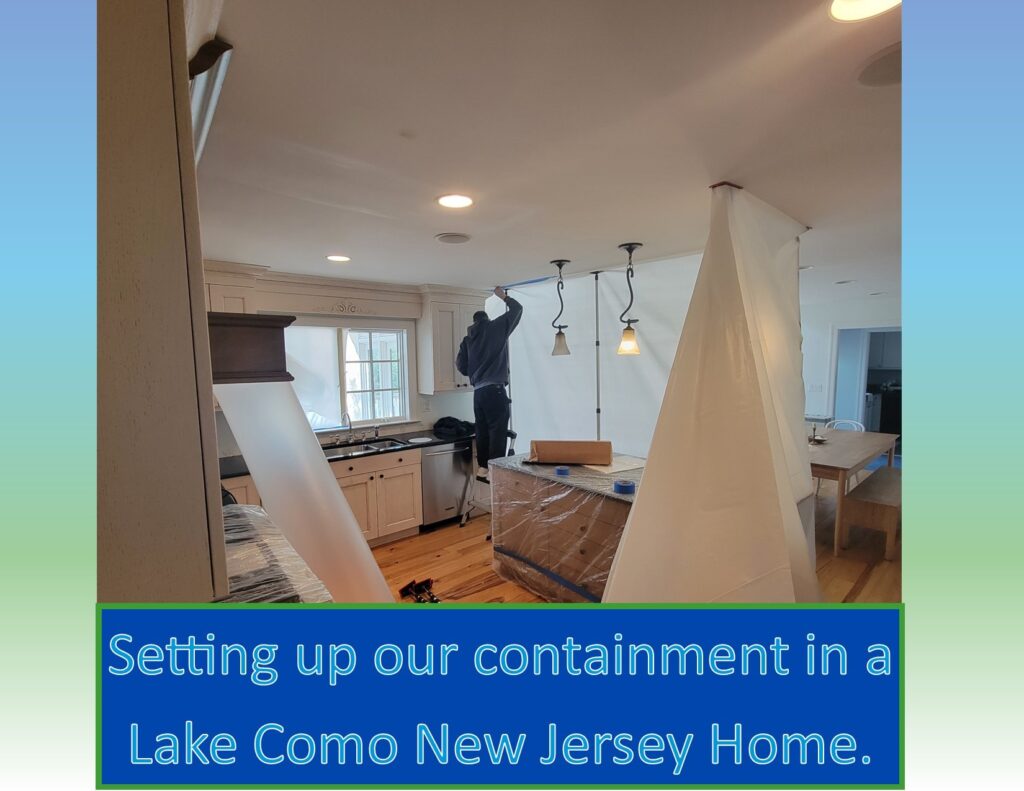
Need Mold Remediation Services in New Jersey?
Call 732-716-2384 or Contact Us Now
Negative Pressure Containment
Negative pressure containment works in much the same way as positive pressure containment except for one key difference – instead of pushing contaminated air into an isolated space, a fan is used to pull air out from within that same space to create negative air pressure (or suction).
This prevents any particles from entering other parts of your home or building while allowing for proper ventilation within the isolated space itself. The downside to this process is that you must also install HEPA filters around each fan unit in order to ensure that no airborne spores escape outwards due to its powerful suction capabilities.
Containment Zones
For larger areas affected by mold contamination, it may be necessary to create multiple “containment zones” in order to keep workers safe while they are executing their remediation tasks. This involves splitting up contaminated spaces into separate sections or rooms which are then sealed off using plastic barriers and connected by negative-pressure tunnels so that there is no crossover between zones during work hours (this also helps reduce cross-contamination). The use of multiple layers/zones allows for a more efficient and thorough treatment of an infected area without risking further contamination elsewhere in your home or building.
Reason for Professional Installation of Containment Barriers for Mold
If you’re dealing with a mold issue in your home or business, the first step is to get an experienced, professional team of mold remediation experts on the job. These experts will use containment barriers to keep the area safe and secure during the process.
But why should you opt for professional installation of these barriers? Let’s take a look at why professional containment barrier installation is so important.
The Role of Containment Barriers During Mold Remediation
Mold can cause serious health issues, and it needs to be addressed quickly and efficiently in order to protect those who are exposed to it. To contain the spread of mold spores while they work, professionals use proper containment barriers that are designed to keep mold and other contaminants from getting into other parts of your home or building. This is especially important if there are people living or working in areas adjacent to the affected space.
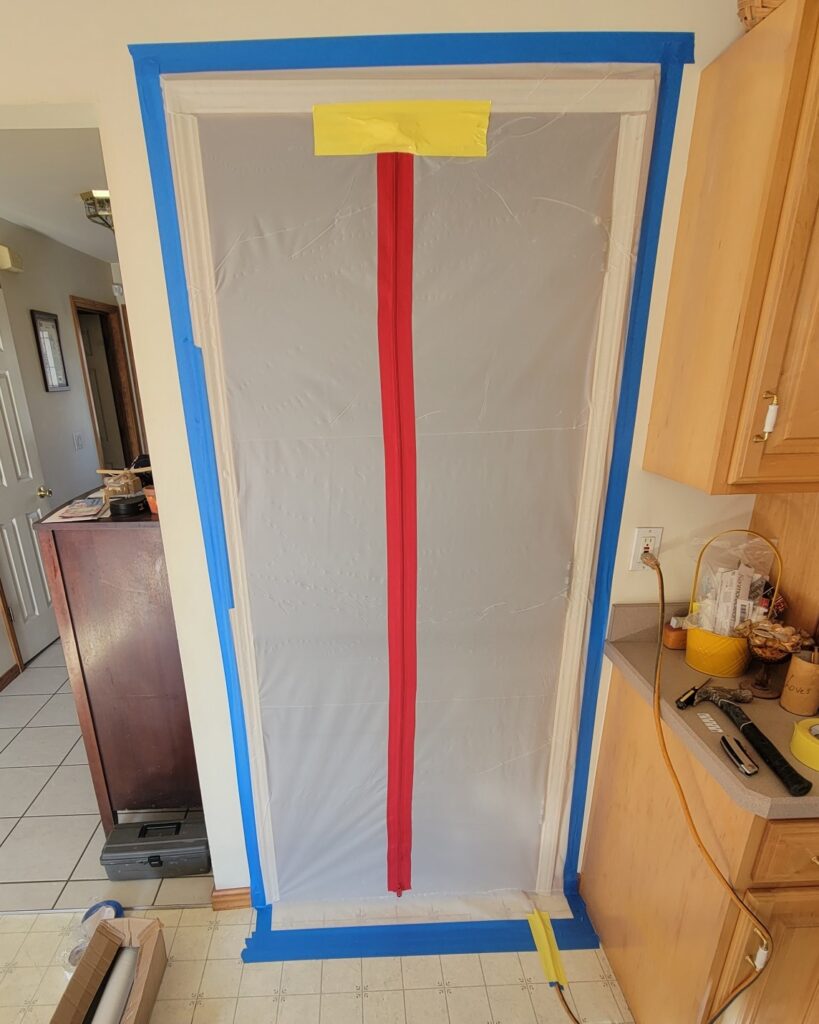
Why Professional Installation Matters
When containment barriers are installed correctly by a professional team, you can be sure that your family and employees will remain safe from any potential contaminants. Professionals understand how crucial it is for all seams and joints between sections of material to be sealed properly and securely in order for air-tight containment to be achieved.
Without proper sealing, mold spores may escape into other parts of your home or business, spreading throughout the building or even drifting outside where they can affect neighbors as well.
Safety First
Another reason why it’s so important for professionals to install containment barriers is safety—both personal safety and environmental safety. When installing these barriers around potentially hazardous materials, such as asbestos insulation, it’s essential that they don’t accidentally create a situation where airborne particles that could cause further harm have an opportunity to escape into other parts of the building or outdoors. Professionals are able to ensure that their installation methods do not put anyone at risk during this process.
Potential health risks associated with mold exposure
Mold is a dangerous and damaging fungus that can grow in many places, including inside of your home. If you think mold may be growing in your home, it’s important to identify and address it as soon as possible. In addition to the property damage that mold can cause, it can also have negative effects on human health. Let’s take a look at some of the potential health risks associated with mold exposure.
Respiratory Issues
The most common issue associated with mold exposure is respiratory irritation or infection. If a person inhales large amounts of airborne spores, they may experience coughing, wheezing, throat irritation, chest tightness, and difficulty breathing.
In extreme cases, these symptoms may require medical attention. People with existing respiratory issues such as asthma or allergies are particularly vulnerable to respiratory complications from exposure to mold.
Allergic Reactions
In addition to respiratory issues caused by inhalation of fungal spores, some people may experience allergic reactions when exposed to mold or mildew. These allergic reactions can range from minor skin itching and rashes to coughing and sneezing fit if spores are inhaled into the nasal passages or lungs. People who suffer from allergy-related conditions such as hay fever should be especially cautious when around areas where mold is present.
Infection Risk
Some types of molds are capable of producing mycotoxins, which are toxic compounds produced by certain fungi that can cause a variety of serious infections in humans if ingested or breathed in over a long period of time.
These infections can include histoplasmosis (which affects the lungs), cryptococcosis (which affects the nervous system), and aspergillosis (which affects the sinuses). It is therefore very important that any area believed to contain large amounts of mold be cleaned up immediately in order to prevent any potential health risks for those living there.
Final Thoughts About Containment Barriers For Mold
It is important to understand the potential risks of mold exposure and take action accordingly. Professional mold removal services in New Jersey, like MasterTech Environmental Jersey Shore, can ensure that containment barriers are installed properly, preventing any airborne particles from escaping into other parts of your home or outside where they could affect neighbors as well.
By taking preventative measures such as installing a containment barrier around potentially hazardous materials, you’ll be able to protect yourself and those living in your building from dangerous health effects associated with mold exposure.
Want To Speak To A New Jersey Mold Remediation Professional?
Call 732-716-2384 or Contact Us Now
Frequently Asked Questions
Q: Is black mold an OSHA violation?
A: OSHA does not have a standard that specifically addresses black mold growth. However, depending on the circumstances, some existing standards may be applicable. For example, general industry standards for respiratory protection (29 CFR 1910.134) or personal protective equipment (29 CFR 1910.132) could apply if workers are exposed to black airborne mold spores.
Q: How does breaking moldy porous materials increase mold activity?
A: Mold Spores need a food source to grow and multiply. The food source can be something as simple as dust or dirt, or it can be the organic matter in porous materials like wood, drywall, insulation, and ceiling tiles.
When you break moldy porous materials, you’re releasing all of that organic matter back into the air where it becomes available as a food source for more mold spores. And since mold spores spread very easily, you’re also increasing the chances of exposing other people to mold hazards.

